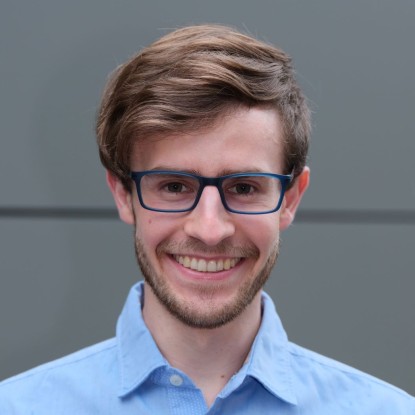M.Sc. Maximilian Dorscht
Working area(s)
Cooperation: Optical Diagnostics and Renewable Energies, Clean Circles
Energy storage facilities with long release times and high energy densities are becoming increasingly important with the ongoing expansion of renewable energies. The Clean Circles project is investigating the chemical energy storage in iron. In a CO2-free cycle process, surplus renewable energy is stored by reducing iron oxide particles. The resulting iron particles can release the energy again by oxidation. In this cycle process, the energy can be stored separately in time and space.
Experimental data are needed to develop a better understanding, as well as to validate and improve modeling of the processes occurring in detail during reduction and oxidation. Chemical reactions and their coupling to transport processes must first be understood for individual particles. Rate determining processes are the heat and mass transport between particles and the surrounding gas phase, as well as the kinetics of the heterogeneous particle surface reaction. These processes are strongly influenced by ambient conditions (temperature, composition of the gas atmosphere) and particle properties (particle size, porosity, etc.). Accordingly, a non-intrusive, spatially and temporally resolved analysis of the elemental composition of the iron and iron oxide particles at various ambient conditions up to the highest process temperatures is required. A non-intrusive laser diagnostic method will be further developed that allows in-situ analysis of the elemental composition (iron to oxygen atomic ratio) of microparticles in flow reactors. Laser Induced Breakdown Spectroscopy (LIBS) will be used for this purpose.
In the LIBS measurement technique, a short high-energy laser pulse is focused on the particle of interest in the flow. Due to the high power density at the focal point, the particle heats up, vaporizes and turns into a plasma. During the relaxation of atoms and ions, radiation is emitted that has characteristic wavelengths for the various elements inside. This allows the elemental composition of individual particles to be determined. In the first part of the project, different influencing parameters (such as particle size, particle composition, surrounding atmosphere, etc.) on the LIBS-signal will be investigated. For excitation, two lasers (a frequency-doubled ns and ps-Nd:YAG laser) will be compared. For example, the short duration of a ps laser pulse significantly reduces the continuum radiation that overlaps the LIBS signal and making it difficult to evaluate the signal. However, it is unclear whether the entire particle can be ionized by the lower energy of ps lasers, allowing single-shot analysis. Previous studies on aerosols mainly considered particles up to 10 μm using ns pulse laser excitation, which resulted in complete conversion of the particle into a plasma by the laser. Therefore, a ps excitation scheme will be investigated versus an ns excitation scheme. The radiation emitted from the plasma will be collected with detection optics and then transmitted via an optical fiber to a spectrometer for analysis. In the further research of the project, particles will subsequently be investigated during the oxidation and reduction process.




